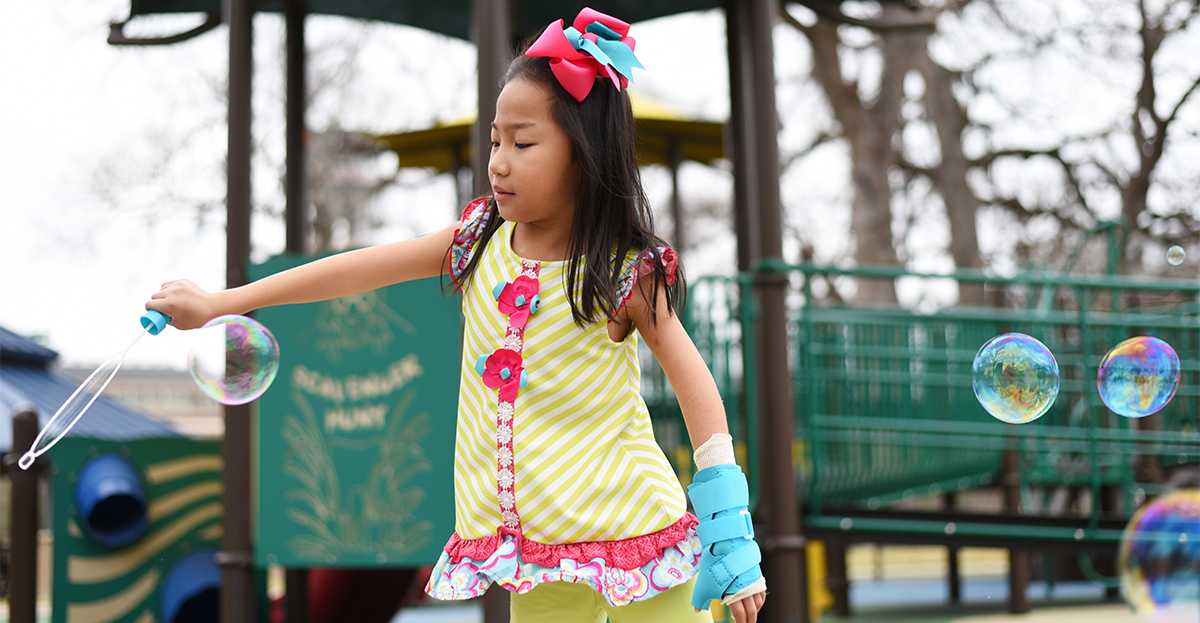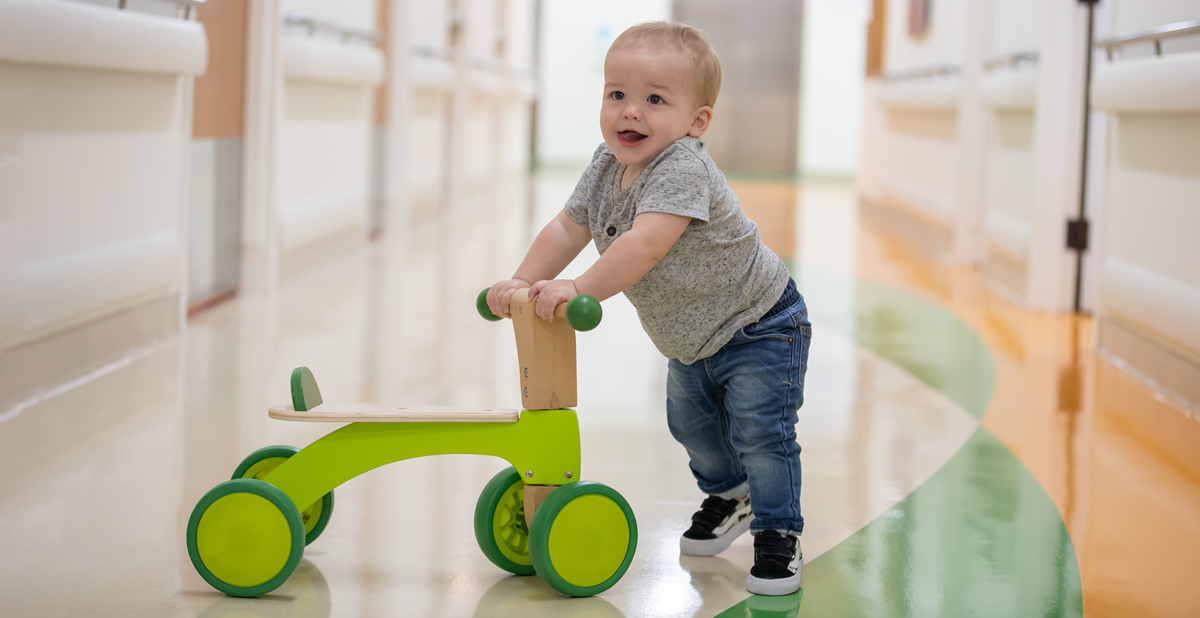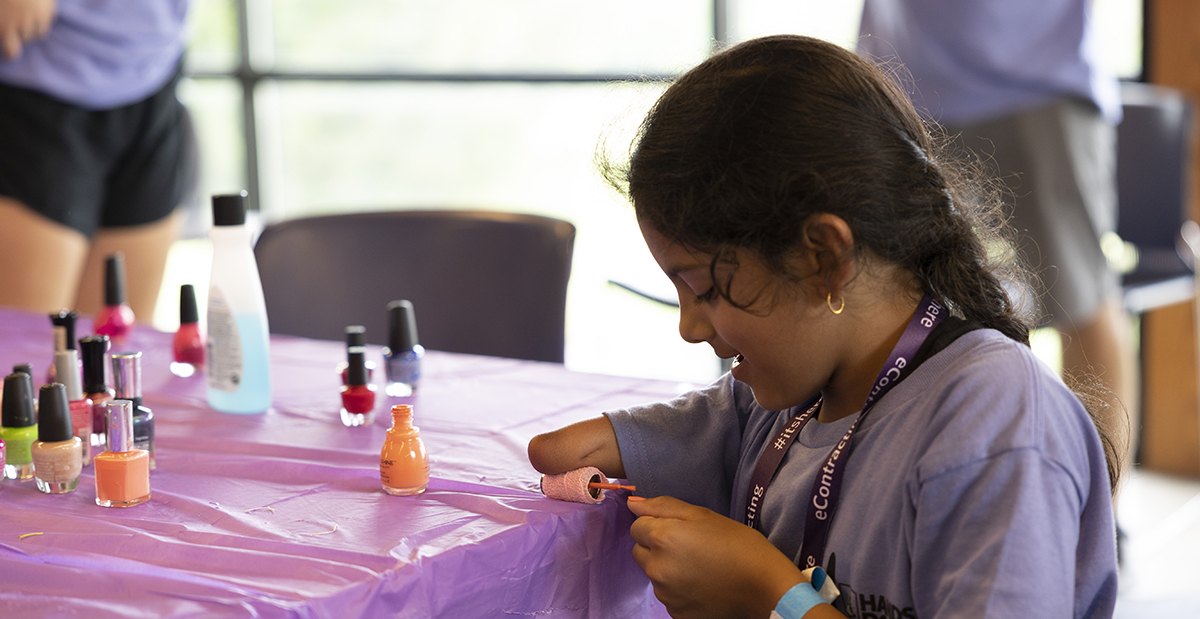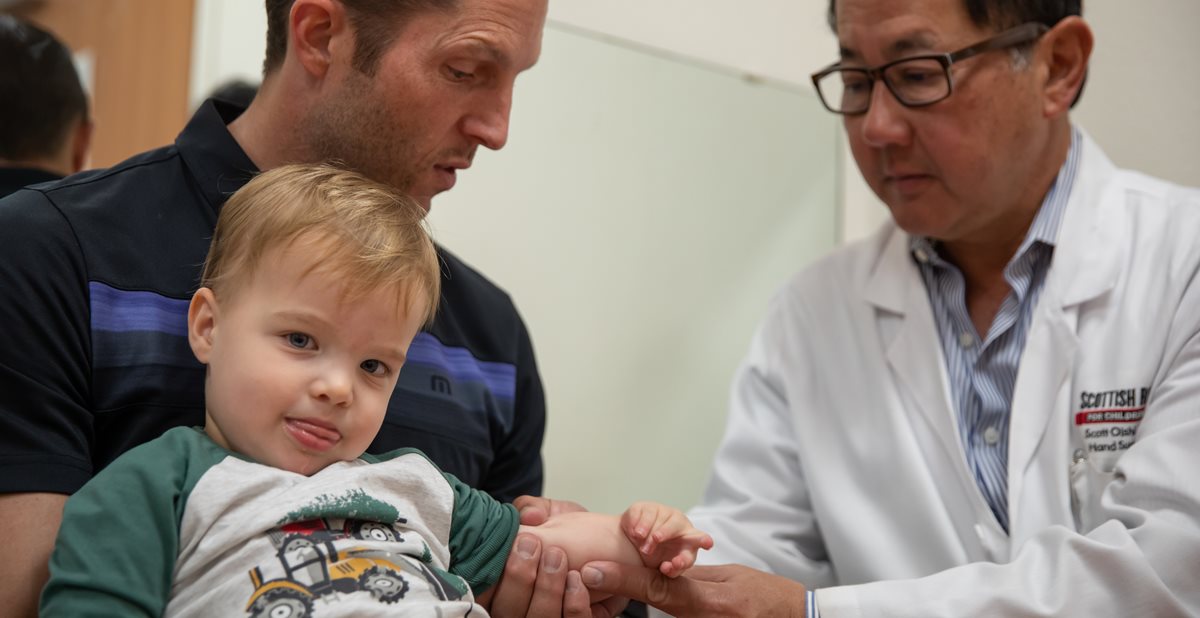
Dec 20, 2022 / Hand Conditions
What is Arthrogryposis?
Arthrogryposis is a rare condition that occurs in one out of 3,000 births. It involves curved or hooked joints and limited range of motion for joints of the hands, wrists, knees, feet, shoulders and hips. Most children with arthrogryposis have normal intelligence and a sense of touch.
The full name is Arthrogryposis Multiplex Congenita.
The most common form is Amyoplasia.
What are the causes?
In most cases the cause cannot be identified. Joints that are unable to move before birth can result in joint contractures. When joints are not moved for a period of time, extra connective tissue develops. This fixes the joint in a stiff or locked position. It also causes the tendons connecting to the joint to not stretch to their normal length making normal joint movement difficult.
The causes for limitation of joint movement are:
To assist your child in developing and achieving goals to maximize independence in activities of daily living and accessing his or her environment.
What is the treatment?
Treatment is tailored to the individual by a multi-disciplinary team of physicians (pediatrician, orthopedic surgeon, neurologist, geneticist), nurses, physical therapists and occupational therapists.
Treatments may include physical therapy, occupational therapy and/or surgery.
In most cases, the outlook is a positive one. The condition does not worsen with age. Therapy and other available treatments can bring about substantial improvement. The vast majority of children survive and live a normal life span. Many excel because they become experts at meeting and tackling challenges and are able to lead productive, independent lives as adults.
The full name is Arthrogryposis Multiplex Congenita.
- Arthro = joints
- Grypo = curved
- Multiplex = different forms
- Congenita = present at birth
- Multiple = many
- Congenital = at birth
- Contractures = limited joint motion
The most common form is Amyoplasia.
- A = absent
- Myo = muscle
- Plasia = abnormal growth or development
What are the causes?
In most cases the cause cannot be identified. Joints that are unable to move before birth can result in joint contractures. When joints are not moved for a period of time, extra connective tissue develops. This fixes the joint in a stiff or locked position. It also causes the tendons connecting to the joint to not stretch to their normal length making normal joint movement difficult.
The causes for limitation of joint movement are:
- muscles do not develop properly.
- muscle diseases.
- fever during pregnancy and viruses that may damage cells that transmit nerve impulses.
- decreased amount of amniotic fluid.
- the central nervous system and spinal cord do not form correctly.
- the tendons, bones, joint or joint linings may develop abnormally.
- a genetic cause in 30% of the cases.
- Several genetic patterns have been recognized, but most cases are rare and recurrence varies with the type of genetic disorder.
To assist your child in developing and achieving goals to maximize independence in activities of daily living and accessing his or her environment.
What is the treatment?
Treatment is tailored to the individual by a multi-disciplinary team of physicians (pediatrician, orthopedic surgeon, neurologist, geneticist), nurses, physical therapists and occupational therapists.
Treatments may include physical therapy, occupational therapy and/or surgery.
- The goal of physical therapy is to increase the range of motion and strength through functional activities and exercises. Assistive devices to help achieve goals may include splints, braces, crutches and wheelchairs. Parents are encouraged to become active participants in a therapy program and to continue therapy at home on a daily basis.
- The goal of occupational therapy is to learn activities of daily living such as feeding, bathing, toileting and dressing with assistive devices. These assistive devices include long handled utensils, hairbrushes, toothbrushes, bath brushes, toileting aids, etc.
- The goal of surgery is to correct the alignment of the upper and/or lower extremities so that the activities of daily living, such as standing and walking are possible. In some cases, tendon transfers are done to improve muscle function. For severely affected children, the extremities are positioned in a fixed standing or sitting position. The pros and cons for both positions will be discussed prior to scheduling surgery.
In most cases, the outlook is a positive one. The condition does not worsen with age. Therapy and other available treatments can bring about substantial improvement. The vast majority of children survive and live a normal life span. Many excel because they become experts at meeting and tackling challenges and are able to lead productive, independent lives as adults.



